An Interview with Neil Brennan (Melbourne House/Beam Software)
By Neil Carr
Published: 28/11/2020
Not much came out of Australia game wise. If you can come up with more than an handful of publishers then you certainly know your stuff. There was one company that managed to break the curve and hell what a company it was. Melbourne House along with the developing arm of Beam Software was well regarded as a company that delivered quality games. The Hobbit, Castle of Terror, Way of the exploding fist were just some of many great games to come from this legendary company and with a great company came a great musician, Neil Brennan. Neil has kindly taken time to have a chat with us about his time as a musician, a game composer, and a computer programmer.
What were your introduction to computers?
Remembering that I grew up in the ‘70s, computers weren’t really a thing when I was a teenager, except for the very small group of Apple II fanboys at my high school. One of those fanboys was Stephen Taylor, who eventually introduced me to the crew at Melbourne House many years later.
The first time I remember doing anything remotely computing-oriented was wasting hours on a programmable robot game (Robot Wars
?) on Steve’s Apple II at his house on the weekend when we were in high school together. It was fascinating and addictive, which I think pretty much describes all of computing for me ever since.
Before joining Beam Software you were gigging around Melbourne in various bands. What can you tell us about those days? What instrument/s did you play? Did you continue to do anything musical after this? Do you do anything musical now?
As a teenager, I was a poorly-practised classical pianist who picked up a bit of guitar and singing on the side. I had a little talent with improvisation and worked hard with a jazz teacher to improve my knowledge, but loved the performance aspect of singing and playing guitar. It’s so much easier to stand up and sing with a guitar rather than crouch over a keyboard! I worked pretty hard on my singing and the harmonica. The other instruments were mostly to support my voice.
At about the age of 16 I started busking with the guitar around Melbourne, playing small coffee shops and support gigs for friends in bands. I played in a few Christian bands as a keyboard player before getting much more seriously involved with the Melbourne bands The Cracks in the Wall
and Stick Figures
, as well as picking up a gig singing and playing in a piano bar in the city called Adam’s Apple
.
It was a sleazy dive, where drunk Greek businessmen would go to pick up teenage Greek girls. I loved it, of course. I would play for 3-4 hours, earn $50 cash-in-hand (this was the ‘80s, so that wasn’t bad), eat a free meal, and spend a third of what I earned to get back home to Doncaster by 2am, ready for another day of University in the morning. Sometimes I would hitch or walk home just to save the money, but it was around 20kms so I didn’t make a habit of it.
I got kicked out of Stick Figures at around this time (I was never that clear on why!), but ended up joining Macguffins for a Sydney tour, again as keyboard player, until finally deciding that what I really wanted to do was sing and play guitar in my own band. At Melbourne Uni I had become really good friends with Gerard Neil (Gid), a trained jazz guitarist. He and I did a bit of busking together then finally formed Redfish Bluefish, which stayed together, playing around Melbourne for about 5-6 years, through multiple line-up changes (but always including me and Gid). We incorporated players from both Macguffins and Stick Figures over the trip as well as friends we met along the way, even to the point of incorporating a brass section.
In 1994-95 I took about half a year off to travel around the world. When I got back I started my own solo project, Linoleum
, which turned into a band that played from 1995 to roughly 2004. You can still find our stuff on Bandcamp: linoleum.bandcamp.com . Linoleum had small-scale success, with airplay on the popular youth radio stations and a short-lived deal with Polygram’s Mercury label until its untimely demise – the label, not the band. As I am sure is common with these things, I always felt like we were good enough to get lucky but maybe not enough to really break into the scene in a big way on just our own steam.
Obtaining a degree in Computer science and being a musician I guess it was only natural to get involved with computer music?
It’s funny but that’s not so much how it happened. On reflection, I think it may all have been Steve Taylor’s fault.
The degree in Computer Science wasn’t my first choice; my life was changed, as the cliché goes, by a book. The book was Gödel, Escher, Bach
, loaned to me by Steve. I was entranced enough by the picture of real artificial intelligence that it painted to switch my major from Biochemistry to Comp Sci. The computer music only really kicked in after I started at Melbourne House. Remember, these were the days before MIDI was even a thing.
How did you become to be involved with Beam Software/Melbourne House?
I was still playing in the piano bar at that stage, but Steve and his friend Doug Palmer had started doing part-time work at Melbourne House in South Melbourne. I can’t remember if it was Doug or Steve, but one of them suggested that I come down and meet Fred Milgrom as they were looking for a musician to work with their game designers. I went down to their tiny little office and met the very strange people working there (Gregg Barnett and Phil Mitchell come to mind, odd guys – Gregg used to like to call people treacle beak
, just for instance). It was a great-paying gig for a nineteen year-old, and along with my piano bar nights I was quickly earning enough to move out of home and keep studying.
Beam Software and Melbourne House were owned by the same company, Beam International. Beam Software was the developer and Melbourne House was the publisher. Were you based in the same offices? What was the relationship between them like? Or were they pretty much the same thing?
So I may not be the person to ask this (really no expert), but my impression was that Melbourne House was a book publishing company that initially put out a few computing books with microcomputer games in the back, that readers would laboriously transcribe manually into their tiny plasticky devices.
These games were so popular that it occurred to Fred that selling the games individually, without the attached books, might be a thing. And it was. They were actually more popular than the books, which were doing fine by themselves. Beam was the company that Melbourne House spun off to develop and market the games, separate from the book publishing. They shared offices, but Beam quickly took over pretty much all the territory available.
(But I could be wrong 😊 )
You started creating music for the ZX spectrum on the Horace games but that lasted only briefly and you became the main composer working solely on the c64 for many years. How did that happen? And why did you only work on the c64 after that?
I think it was a combination of things. The Spectrum (as I recall, long time ago) didn’t have much room in its memory for music. But it was also a horrible device for sound, with a nasty little speaker we could only click on and off. We called it a clickatron
. With all the tools at our disposal, we could only get 2 simultaneous voices out of the thing at the best of times, and that by clever PWM maths.
The C64 on the other hand had the wonderful SID chip, with multiple channels, different oscillators, noise, filters and ring modulation. It was like a tiny, little, poorly quality-controlled, synth in a box. Or beepatron
, if you will. I loved it. It let me actually write interesting pieces with approximations of real instruments and had that bit more memory for me to play in, so it was always my first choice if I had one. The fact that the filtering was different on every machine was a constant bugbear, though.
I think Fred felt that there just wasn’t as much added to the Spectrum games by music as there was for C64 games, so he was reluctant to squeeze game-play or graphics for what he saw as little benefit and would drop the music, despite the whole aesthetics of constraint
thing.
You started off with the ZX spectrum, then went on to the c64 and briefly towards the end of your stint at Beam Software you worked on the NES. What were the differences/Challenges between those three machines?
The ZX and C64, I think I’ve covered above. I’m not sure about the NES. I really don’t remember doing that much with it. I think I must have submitted pieces that were encoded onto it but not worked on it directly? Mists of time here.
During the research process i stumbled upon a letter (vgmpf.com) written by Neil regarding the NES version of Defender of the crown
. I asked Neil to verify that the letter was his and if he would like to comment on it. The letter reads…….
Well that certainly made me laugh! Okay, yes, you've spurred my memory. I definitely wrote that letter, in my inimitable, charming style.
When I left Beam Software, it was to work in more mainstream computing for Library software. Books and the like. The company I moved to was in Port Melbourne, a few kilometres from South Melbourne where Beam was situated. Fred and I had a good relationship and he still needed someone to help with the music for the games, as well as the embedded code that played the music and sound effects, so I moonlighted for quite a few months afterwards, schlepping across in my new business shirts and shiny shoes. All my work for Beam was outside of normal working hours and the money was great, but I recall getting pretty frustrated if I had to spend a lot of time on setting up my workstation in the evening.
The biggest piece of work I took on in that time was porting the C64 sound module, the sequencer and synth, to the Nintendo as best I could. The intention was to support the music language I had created on both platforms so that we would be able to reuse any tracks we had created for C64 on the Nintendo as painlessly as possible. I think the music chips of the 2 systems were more similar than different, so this supported multi-platform releases of games. I remember having to arrange and transcribe music for the Nintendo games, but I don't think I wrote a lot of new music at that time. That also explains my lack of memory of some pieces I have seen attributed to me from the period; I will likely have arranged music from other composers and of course, those tracks didn't stick in my mind the way my own creations have. Accreditations were really never Beam's strong suit and over time we all become unreliable witnesses, I guess.
Apart from creating your own sound drivers did you do any other coding?
I started off as just the house musician, but as I acquired computing knowledge and skills from my university course, by the time I graduated I was actually useful enough to pick up programming work at Beam. As well as coding the 6502 assembly sound module and music language for the C64 synth, I got involved with the in-house downloader and cross-development suite written in C on IBM PC and took over the sysadmin work for the Unix III Pillar machine (used mostly as a file server at the time, I think, again hazy).
Mastertronic bought Melbourne House in 1987. What changes did you see? Did this have an impact on your creativity as a musician? And as Beam Software as a whole?
I think I was blissfully unaware of the changes. Beam was forever moving offices or engaged in other upheavals, so this one didn’t seem notably different from the others.
In Europe there were plenty of opportunities for budding coders/musicians. Other than Melbourne House and a few others, Europe didn’t see that many titles coming across the seas from Australia. Where opportunities difficult to come by? If you hadn’t joined Beam Software how easy would it have been to join another software developer? Or go freelance?
For me Beam was a happy accident. I wasn’t a big game player even after they became popular, so it was primarily a music gig that paid good regular money and allowed me to get a foothold in the computing world. I think if it hadn’t happened, I would have just tried to pick up more piano bar work and looked for computing work after uni. But they were good times, and I took the first steps of my eventual career there. I’m grateful for it all. I wasn’t aware of any other local game houses at the time, to be honest.
My next job was in library software for a huge pay rise (game devs never did get paid much), the one after that at a telco. Apart from those early days, I’ve very rarely made much of a living out of music, despite my very best efforts. I think the world isn’t really set up to support or respect 99% of artists, but you can be a pretty poor computer programmer and still get a great job. It’s not the fairest of things.
How aware were you about the c64 in Europe? Were you aware of other fantastic musicians such as Rob Hubbard, Martin Galway, Ben Daglish etc?
We all knew Rob Hubbard. He was amazing. Wonderful arrangements and the best sounding instruments on the C64 at the time. We would listen to his stuff and just try to figure out how they were doing it. As a musician, there’s always someone better than you and always someone worse, but honestly I always felt he and his wonderful sounding instruments were always a cut above. I didn’t really know much about the others, to be honest.
What was your day to day like at Beam Software? Was it a fun environment? Was it pressured? Was there plenty of drama?
Haha. It was a pretty good place to work. Very much the no dress code, tinny cassette music always playing, pub for lunch and pizzas, beer and games on Friday kind of place you might hope for as a young developer. Starting times were not strictly enforced, but everyone worked late. Numerous people didn’t wear shoes.
The devs were smart and dedicated to their work, Fred was a gentle madman in a wrinkled linen suit and the graphic artists were very cool and let me sit with them. I was introduced to Johnny Cash, The Fall, Patsy Cline, Nancy Sinatra and the sublime Galveston
by Glen Campbell, and learned how hard you can work on projects that both succeed and fail commercially, with sincerely no whisper of telling in advance which will be which.
From where I was sitting, the developers felt the pressure much more than the artists. The art usually came pretty early for most games, with late rewrites more the exception than the rule (and then usually for technical reasons), but the devs had to ride the game right down to the wire. My impression is that’s still the case in game development, but I haven’t been in that world for decades, I think fortunately, from the stories I hear.
Did you get much access to the games you were making music for? Many musicians back in the day just created music without knowing much about the games they were creating for? What was the procedure at Beam Software?
I would normally talk through the key concepts any game with Fred, usually with an overview of the characters and artwork, and he would try to give me the kind of musical feel
that he was after. I would take that as a brief and head off to my little 4-track to put down as many themes as I could muster, using whatever instruments I could throw together.
Normally this would be 8-10 pieces, which I would mix down and circle back to Fred with to see which ones we thought would make it. I would fully instrument the winners and explore related themes, then start trying to pull them down to the stripped-down 3-voice bare bones that the SID chip could support. The ideas were always the fast part, the painstaking precise work came at the end, especially trying to get feel
into the mechanically rigid boundaries of our sequencing modules.
Castle of Terror is interesting due to the music in the game changing throughout setting the mood of various scene’s and raising tension as you progress. The music is still chilling to this day by the way. It’s possibly one of the first games to feature an evolving soundtrack so it’s quite historical in those regards. It’s something that these days we are used to but back then it was a rarity. What can you tell us about how you went about composing the music for this game and its atmosphere?
I’ve just gone onto YouTube to listen to the Castle of Terror pieces. I honestly can’t remember writing them, but know them well. It’s a strange feeling.
I think the progression that you’re talking about is mostly because they are themes that develop over time, that we plotted the game sections to progress through. The original pieces used lots of moody cello sounds, pizzicato strings and suspended horror movie chords, some of which makes it through to the game. I do recall trying to use space as much as possible, just because it’s creepy and was a bit unusual in games at the time.
Much of your music is atmospheric. Was there something that influenced you in that respect?
Fred’s view of games was very cinematic. He would make me watch Fellini films, or study Chinese music or mention composers that he felt would fit with a game. I’ve always been fascinated by the incidental music that we hear in movies and TV shows that we’re not really meant to listen to, but the video just feels naked without. I think Fred and I honestly managed to be on the same wavelength with this approach most of the time. He was an interesting muse.
Games are long things, like movies. Little pop themes can get pretty tiring after you’ve heard them the 800th time, so working with progressively mutating atmospheric music felt like the right way to not drive people crazy.
Way of the exploding fist contains sections from Dance Of The Yao People. While it’s not a 1-1 cover, more of a remix. What was the thinking behind that?
Fred enjoyed classical music, not just Western, and not only for its beauty and melodic richness, but also because it was out of copyright. That, he loved.
Way of the exploading fisthas sections taken from Dance Of The Yao People
There’s quite a lot of remixes over on RKO/Remix64 have you or do you occasionally self indulge? How do you feel about your music still being honoured to this day?
I’ve heard a few and been incredibly impressed with just about all them, to be honest. It’s amazing to me that the things that I did when I was in my late teens and early twenties have somehow managed to last this long and attract this kind of attention. It’s a strange and humbling thing, that I put down to the power of nostalgia for those who grew up playing the games. There are a few that I’m still proud of as melodies, but largely I feel like I’ve done better work that has sunk without trace. Life’s weird, and people are very attached to what they grow up with.
Why did you leave Beam Software and indeed the games industry in favour of a more corporate career?
For the chicks. Okay, not so much.
I think it was a combination of things: game devs really didn’t get paid much, but it also felt like there was a world of computing out there that I was only scratching the surface of. I had fallen in love with the prospect of artificial intelligence, and the intricacies of computing theory, and although there were eventually applications for that in games, that wasn’t so much the case in the early days of the art form. Our challenges were more fundamental – especially extracting performance from meagre underpinnings, squeezing the very most out of the tiny CPUs and scarce memory resources of the early devices.
Considering how computer music evolved over the years is there any bit of you that regrets leaving the industry?
Very little, to be honest. I’ve hired a few game devs over the years and none of them have spoken in glowing terms of their days in the trade. That may be because they were already disenchanted of course, but artistic endeavours have a habit of chewing up young practitioners and I fear that there are industries based on that sometimes. There are an awful lot of 80 hour weeks in game development, at least in my experience.
I do love the amazing scope of games these days. I was astounded when the earnings from games surpassed the music and film industries put together, and with the continual advances in computing, AI and visual effects I don’t kind I would want to be a young film actor at this moment. I suspect that’s a job without a real future. Robots are so much cheaper, especially in syndication.
Looking in my crystal ball, I expect that games will eventually subsume film and perhaps, for some people, even the outside world. Would I like to be part of that? Yeah, maybe. At least some of the time. Art makes life worth living, doesn’t it. I think these days I would expect to be paid better.
Where did life take you after Beam Software? And what did you do today? Do you still tinker with music at all?
I kind of answered this above. I’ve had a long career in computing. I’ve worked around the world, led a start-up that made millions from algorithmic trading the US stock markets (but not as much as if we had just bought property in Australia!), been the CTO of a different start-up, sung on stage for rock bands, recorded desperately unsuccessful albums at great personal expense and right now am running development teams at one of Australia’s big four
banks preventing Financial Crime. I have 3 kids who are all still at school, all of them smarter than me, and a lovely wife who I’ve been with for nearly 20 happy years.
I don’t play much music these days. I catch up with the last incarnation of Linoleum from time to time and we drag out a few songs. I took up the bass in recent years and wish I had done it much earlier in life – there’s my performance instrument. The whole mind/hands separation that someone like McCartney did to simultaneously sing and play those lines so effortlessly is sincerely staggering.
I guess if there’s one very surprising thing I’ve become aware of from answering your questions in this interview (and I’ve never realised this before!) is how much my friend Steve Taylor had to do with the path I eventually chose. It does make me wonder, what if I had never played Robot Wars
at his house in high school, what if he had never loaned me Gödel Escher Bach
, what if he had never taken me down to meet Fred? That’s kind of crazy. Thanks, Steve



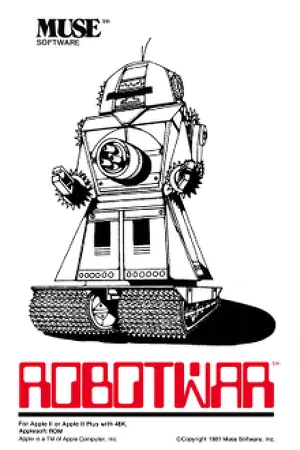
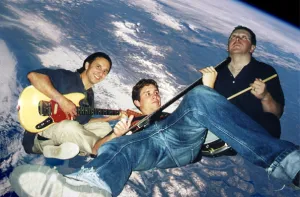
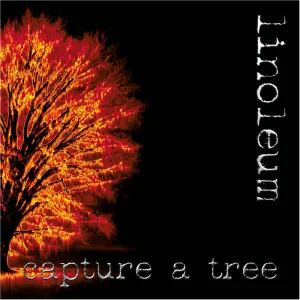
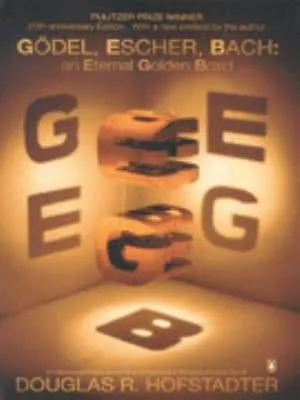
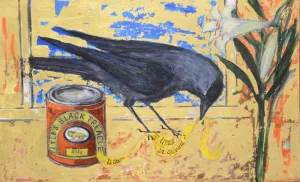
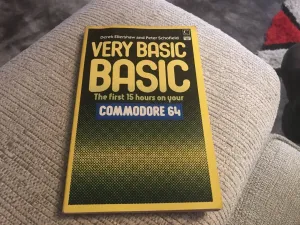
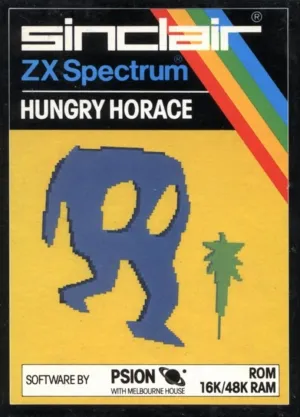
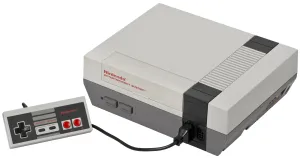
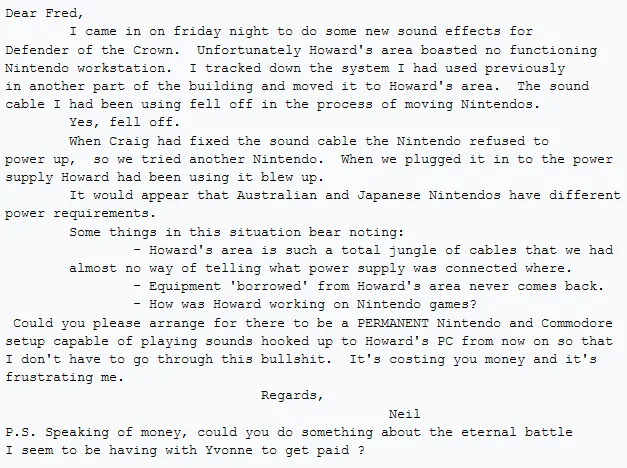
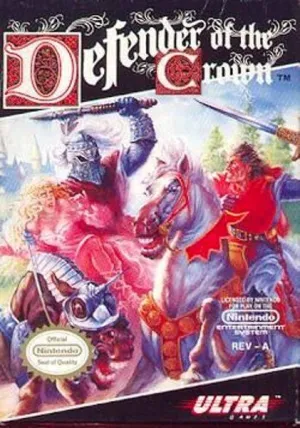
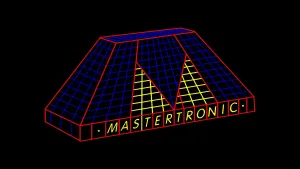
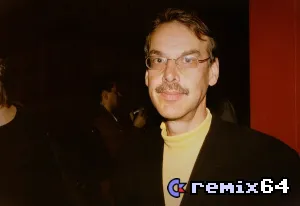
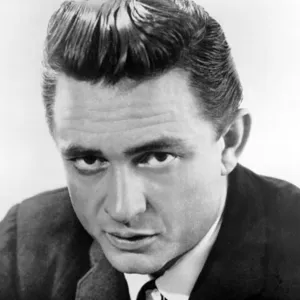
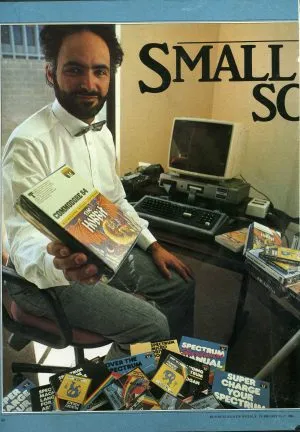
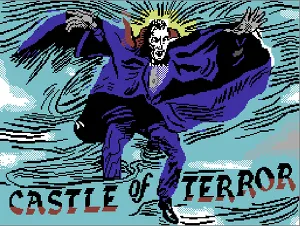
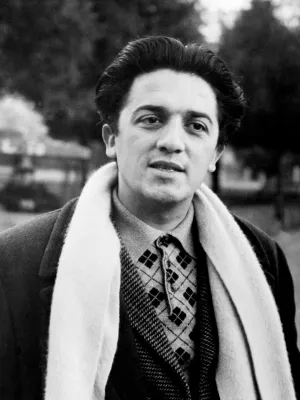

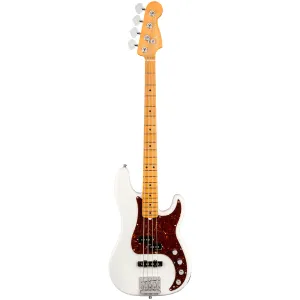










Comments